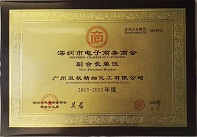
![]() E-mail: admin@gz-chemical.com
E-mail: admin@gz-chemical.com
Email us,best price and silane solutions for you!
Tel:+86 (20) 29035969

![]() E-mail: admin@gz-chemical.com
E-mail: admin@gz-chemical.com
Email us,best price and silane solutions for you!
Tel:+86 (20) 29035969


Indiana University researchers are advancing knowledge about how bacteria build their cell
walls that could contribute to the search for new antibacterial drugs. They have created a n
ew tool to observe living cells in real time under a microscope.
"If you look at the history, no one's really discovered a fundamentally new class of antibiotic
for the past 40 to 50 years," said IU chemist Michael VanNieuwenhze, who led the study.
"Antibiotic resistance is a significant and urgent public health threat, and we think that new
ways to address it—including this—have significant value."
The need for new ways to study bacteria is driven in large part by the threat of bacterial
resistance. According to the Centers for Disease Control and Prevention, at least 2 million
people in the U.S. get an antibiotic-resistant infection each year, and at least 23,000 people
die.
"This new technology takes advantages of specific cellular enzymes to stick colored dyes—or
'probes'—into the walls of bacterial cells," VanNieuwenhze said. "Since these same enzymes
are inhibited by other well-known antibacterial compounds—most notably, penicillin—we could
theoretically also use these probes to seek out entirely new classes of drugs that inhibit the
same reaction."
VanNieuwenhze's lab has already created two other cellular probes patented through IU—called FDAAs (fluorescent D-amino acids) and DAADs (d-amino acid dipeptides)—which are in use in laboratories across the globe. Their new class of probes, which build upon these earlier advances, are called rotor-fluorogenic D-amino acids, or RfDAAs. IU has also filed for a patent on this technology.
Guangzhou Double Peach Fine Chemical Co.,Ltd
Address: No 3401 Huangpu East Road, Huangpu District, Guangzhou, China
Tel:+86 (20) 29035969 Fax:+86(20)29035979
Tel/Wechat/Whatsapp:0086 13826126978 admin@gz-chemical.com